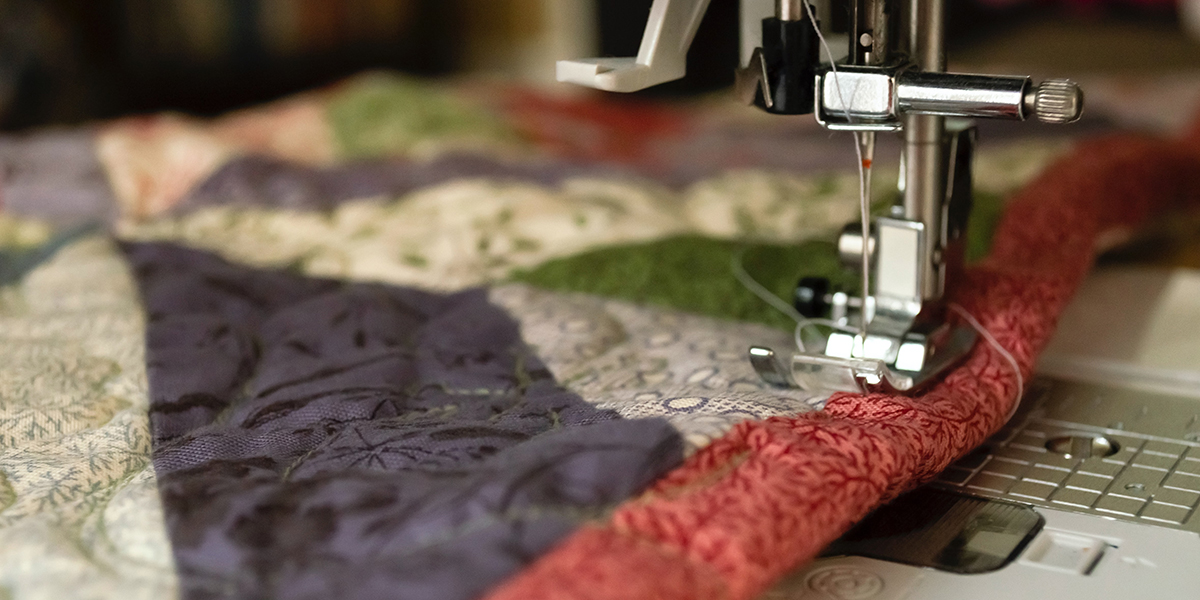This is the second story out of nine in a series dedicated to Missouri’s Bicentennial. Read the rest here: one, three, four, five, six, seven, eight, nine.
In 2013, well before most Missourians were even thinking of the state’s two hundredth birthday, the 97th General Assembly, through a concurrent resolution, asked the State Historical Society of Missouri (SHSMO) to start developing ideas and connecting with stakeholders for the bicentennial celebration in 2021. SHSMO believed the celebration should be statewide while recognizing the importance of local and regional identity and providing opportunities for many people to participate. The Bicentennial Quilt Project would come to embody all three.
“We knew we wanted to do something truly statewide that would reach every county in some way, shape, or form even in a minimal way,” says Michael Sweeney, SHSMO Missouri Bicentennial coordinator. “We wanted to democratize participation, and if you wanted to find a way in you could. We wanted to make sure that we allowed for some local control so it wasn’t someone from the outside coming in saying, ‘Listen, this is what we’re doing.’
“Missourians have a strong sense of local identity,” he adds. “So, it’s hard to come up with unifying symbols for Missouri. We wanted to find ways to emphasize the local without being parochial, and we wanted something pointing toward the future.”
A quilt could do all of those things. So SHSMO put out a call and enlisted the help of local, regional, and statewide partners. The Missouri Star Quilt Co. out of Hamilton stepped up along with the State Quilters Guild to get the word out to quilters. Friends of the Missouri Governor’s Mansion and Missouri Division of Tourism came alongside to support the exhibition of the project.
Michael feels blessed to have had the partners’ participation, particularly that of the Missouri Star Quilt Co., which became a major partner and donated the time and materials to put the blocks together and quilt and bind the project when it got to that point.
“It’s a moment in time that captures the entire statehood and that’s going to be represented as a quilt,” Missouri Star Quilt Co. Public Relations and Social Media Manager Mary Bonnette says.
They couldn’t resist being a part of the project.
There were no rules, really, for what could be on the blocks, only that they be an expression of the county they represented. The open submission period ran from October 2018 to September 2019. A total of 203 blocks were submitted, and a committee made up of the partners selected 115, one for each county and the Independent City of St. Louis. There are also six extra blocks that represent the project partners, exhibition supporters, and the bicentennial logo.
Because the blocks are expressions of place and the quilt an opportunity to view them together, the potential to create conversation was an impetus behind the guidelines, Michael says. By not providing strict rules about content for the blocks—by just asking for representations of the county—they ended up with several unique and diverse expressions of place. Putting these individualized expressions of place together in one quilt is in some ways symbolic of the state—lots of different voices in the conversation, he explains.
Getting full participation from every county was a challenge, though. While Michael visited every county and held meetings with interested groups, some counties needed a nudge. But a few, like Ray and Texas counties, were prolific, sending in nine or ten blocks for consideration. To fill the gaps, the State Quilters Guild and Missouri Star Quilt Co. sourced quilters to submit blocks for missing counties.
For the most part, however, there was excitement behind the idea, and Michael was encouraged. All he needed was one quilt block per county to see the project completed.
“The ones I tend to appreciate the most are the ones I know a little bit of back story on,” Michael says. “Then it becomes more than just: here’s something for you to look at and engage with.” A teenager in Oregon County worked with her seventy-two-year-old grandmother to put her block together. The Douglas County block, called “Dad’s Duke,” features a particular Missouri fox trotter: the block-maker’s father’s horse, Duke. A photo of the quilter’s father on Duke was included with the submission.
“Those sorts of blocks are the ones that I tend to like the most because they have this human spirit behind them that I know about,” he adds.
The blocks arrived in November 2019 at Missouri Star Quilt Co. and employees got to work. Michael worked with Courtenay Hughes, manager of in-town education, to arrange them in a loose geographic pattern based on county location in the state. Then Courtenay along with Julia Birkeness, director of human resources, pieced the quilt top before sending it to Missouri Star’s machine-quilting department for quilting and binding. The entire process took about twelve hours.
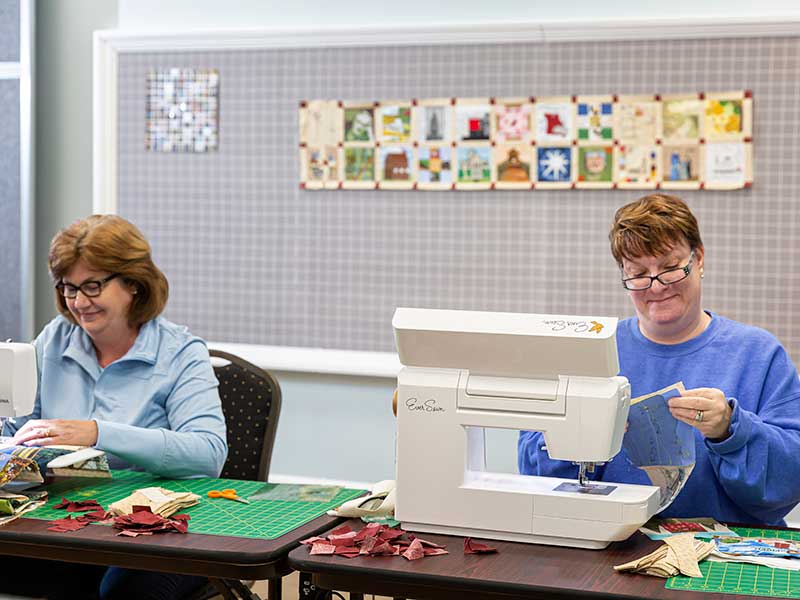
“It was a bit of a time intensive project, but we are elated to be a part of it,” Mary says. “It has been an honor to help stitch together the bicentennial quilt. Quilts have told stories for centuries, and this one will live on to mark this moment for generations to come.”
Color and patterns can make quilts beautiful, and knowledge of the stories behind them can make them special. But beyond the color, structure, and stories, Michael wants this quilt to take on a life of its own.
“The other thing I hope the quilt does is become a conversation tool, become a learning tool,” he says. In a state that can feel somewhat disjointed at times, there are opportunities as you view the quilt to connect with other regions of the state. He wants the quilt to open up ideas and conversations about Missouri as a place.
Missourians will have a chance to see the quilt in person at several tour stops planned across the state during the remainder of 2020 and throughout 2021. The tour is still being finalized as the Covid-19 outbreak has caused cancellations of some of the early stops in 2020.
To see the completed bicentennial quilt, find more information about each quilt block, and find tour information, visit Missouri2021.org/Bicentennial-Quilt.
CALLAWAY COUNTY
Juanita Helmig Schuster
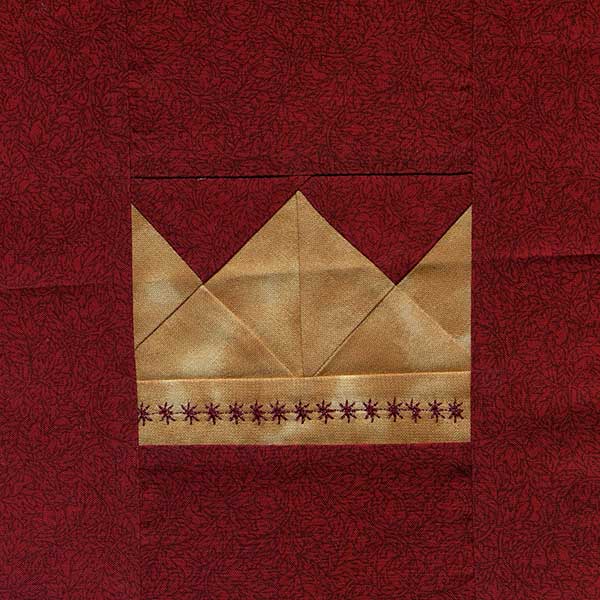
In 1861, Jefferson E. Jones and Union General John B. Henderson signed a nonaggression pact. The treaty, in effect, declared Callaway County a sovereign nation. While the details of this event are in dispute, the residents of the “Kingdom of Callaway” still have that fierce independent spirit.
NEW MADRID
Jill Bock
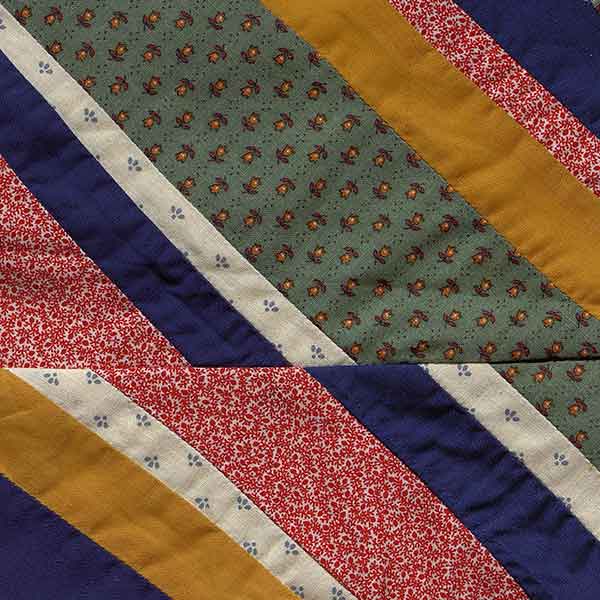
New Madrid County is known for the earthquakes of 1811 and 1812, which caused the Mississippi River to run backward and were felt throughout the Midwest. This design, created by Jill’s husband, represents the various strata of earth along the fault line. On the day she finished the quilt block, she was awakened by an earthquake of about 3.1 magnitude.
BUCHANAN COUNTY
Murla Leehy
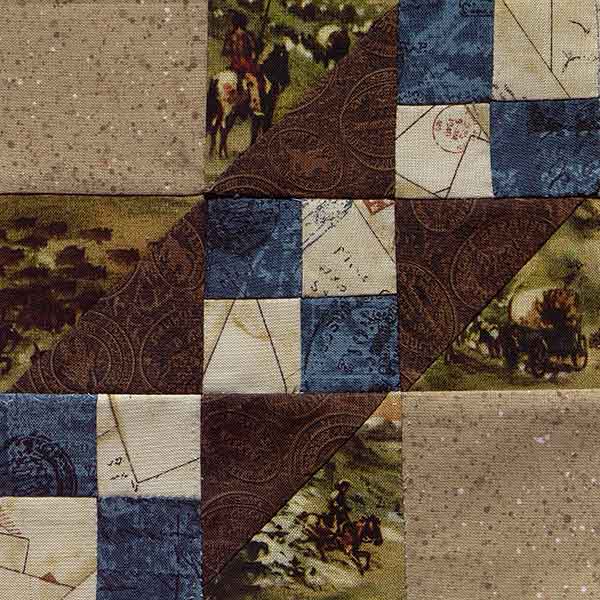
Buchanan County and its county seat, St. Joseph, were the jumping off point for pioneers heading west on the Oregon Trail. The light-colored, diagonal blocks represent the road. The blue squares represent the dangers of the trip. The Missouri River, on the western edge of the county, is represented by the dark brown triangles.
DUNKLIN COUNTY
Virginia Lee Smith
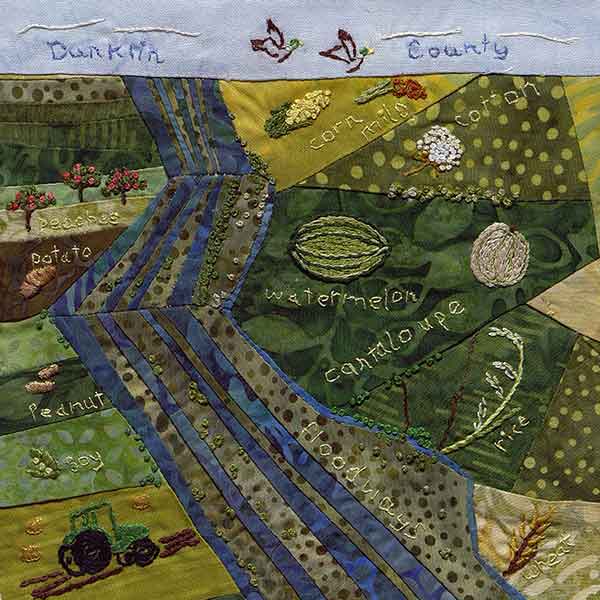
Dunklin County is located in the Little River Drainage District, constructed between 1914 and 1928. This drainage district is the largest one in the United States. The quilt block showcases the agricultural products made possible by the drainage of the swampland.
CLARK COUNTY
Susan Delia Inman
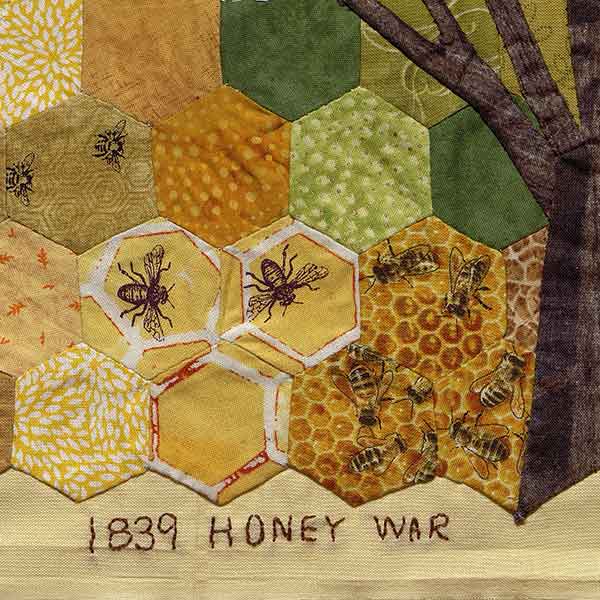
The 1839 Honey War was a border dispute between Clark County and Iowa Territory, later known as Van Buren County, Iowa. After much local conflict, including the cutting down of three bee trees in the disputed area, the states decided it wasn’t their problem, but one for the federal government. No shots were fired. The Supreme Court settled the dispute in 1851.
Robyn Renee Gragg
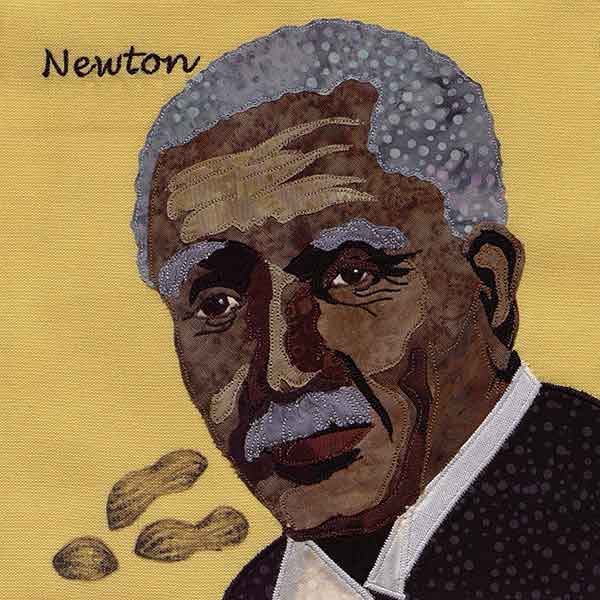
Although George Washington Carver, born in Diamond, began life enslaved, his remarkable intellect led him to a life of learning and freedom. Carver’s scientific research on peanuts and sweet potatoes while working at Tuskegee Institute helped revitalize the southern economy.
Linda Roberts
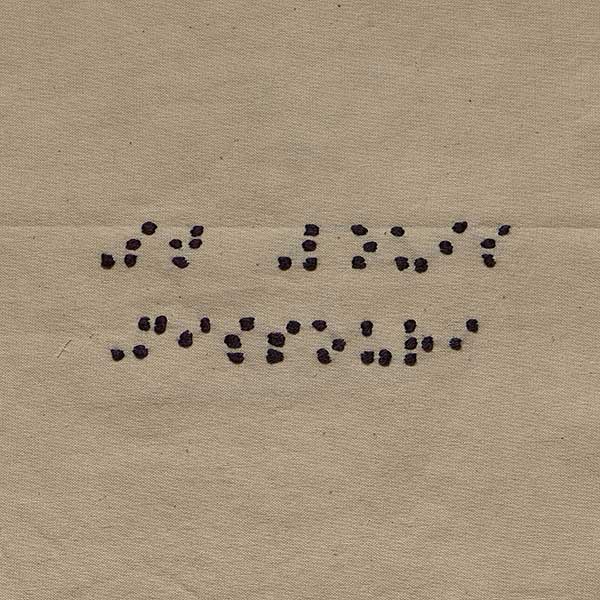
St. Louis has been the home of the Missouri School for the Blind since 1851. It was the first educational institution to adopt braille and the home of the first braille printing press. The State of Missouri Department of Elementary and Secondary Education operates the school, and attendance is free. The block says simply: St. Louis, Missouri.
LINCOLN COUNTY
Angie Henderson 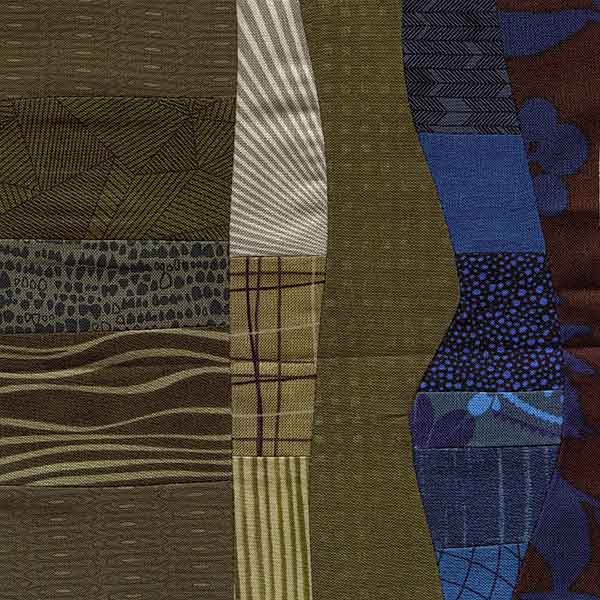
The Mississippi River and farming comprise a large part of Lincoln County. Agricultural products include soybeans, corn, hay, and wheat, along with cattle, hogs, and sheep. The colors, fabric patterns, and unique piecing of this block create a visual representation of place in Lincoln County.
Photos // State Historical Society of Missouri, Missouri Star Quilt Co./Mike Brunner
Related Posts
Missouri Bicentennial Quilt on display in Kansas City
To honor Missouri’s 200 years of statehood, the State Historical Society, Missouri Star Quilt Company, and the Missouri State Quilters Guild teamed up to find quilters for each of the individual quilt blocks.
The Forest Grove Cemetery Project in Lexington, Missouri
Learn about the Forest Grove Cemetery Project and the people who are buried there.
Pickleball Is Taking Missouri By Storm
It took about a decade for pickleball to sweep Missouri. With more than 100 locations developed since 2010, Missouri might just have the fastest-growing pickleball community in the country.

